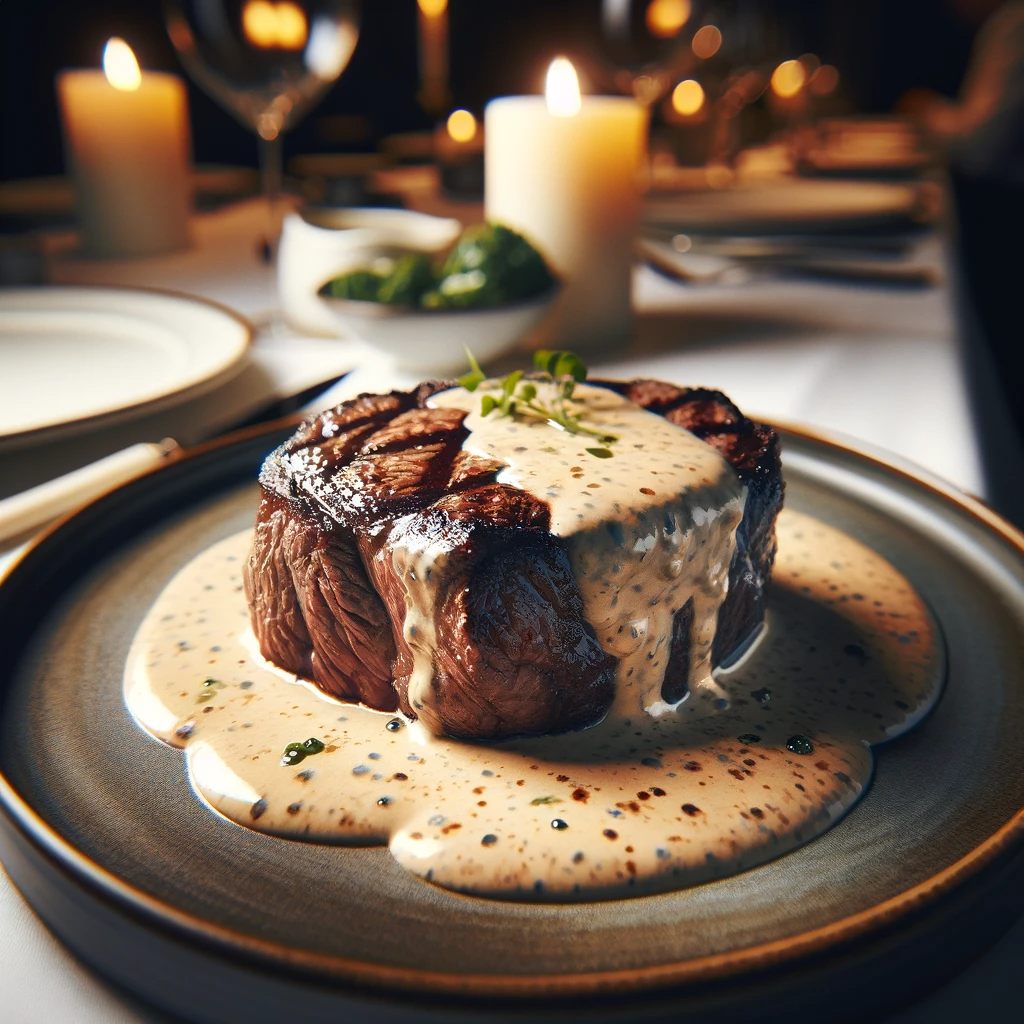Steak, a symbol of culinary luxury and a favorite in many households, commands respect in its preparation and pairing. However, not all side dishes are worthy companions to this prized meat. In this article, we delve into the nuances of what not to serve with steak and why, unraveling common blunders in this gastronomic journey.
1. Ketchup
Serving steak with ketchup is a cardinal sin in the culinary world. This common condiment, though popular, undermines the rich, robust flavors of a well-cooked steak. Ketchup’s overpowering sweetness and tanginess can mask the natural taste of the beef, turning a potentially exquisite dish into a flavor debacle.
Ketchup’s dominance over the palate detracts from the steak’s subtle notes, developed through careful cooking and seasoning. A steak’s flavor profile, whether it’s a tender filet mignon or a marbled ribeye, deserves to shine without competition from such a domineering sauce.
Moreover, the choice of ketchup can come across as unsophisticated, especially in fine dining settings where steak is often a star dish. Opt instead for more refined sauces that complement rather than overpower, like a rich béarnaise or a wine reduction.
2. Applesauce
Applesauce, with its sweet and somewhat tangy profile, is another unexpected offender in steak pairing. While it might be a delightful accompaniment to pork, its presence alongside steak creates a culinary mismatch. This unconventional pairing disrupts the balance of flavors, overshadowing the steak’s savory essence.
The texture of applesauce also poses a contrast issue. Steak, known for its firm, satisfying chew, is oddly juxtaposed against the mushy consistency of applesauce, leading to a disjointed dining experience.
Furthermore, the visual appeal of a steak dish can be compromised by the addition of applesauce. Its pale, often lumpy appearance can detract from the visual allure of a perfectly seared steak, potentially diminishing the overall appeal of the meal.
3. Mustard
Mustard, though a staple in many kitchens, is a surprising misfit when it comes to steak. The sharp, pungent flavor of mustard can clash with the steak’s natural taste, leading to an unpleasant flavor war on the palate. This contrast in flavors can be too aggressive, overpowering the subtle nuances of the meat.
While mustard may enhance meats like sausages or burgers, it does not afford the same courtesy to steak. The robust nature of steak demands a more complementary accompaniment that doesn’t compete for attention.
In addition, the texture of mustard, especially grainy varieties, can be jarring against the smooth, tender bite of a well-cooked steak. It’s advisable to reserve mustard for more suitable pairings and allow steak to bask in its natural glory.
4. Mac and Cheese
Mac and cheese, a comfort food favorite, might seem like a tempting side for steak, but it’s a culinary misstep. The rich, creamy texture and flavor of mac and cheese can overshadow the steak, leading to a heavy and unbalanced meal.
The richness of mac and cheese, often laden with cheese and butter, can be too much when combined with the natural fats of a steak. This combination can lead to palate fatigue, where the richness of both elements becomes overwhelming.
Additionally, the casual nature of mac and cheese can detract from the sophistication often associated with steak dinners. Opting for lighter, more refined sides can elevate the steak experience, maintaining its status as the centerpiece of the meal.
5. Tomato Sauce
Tomato sauce, with its acidic and sometimes sweet profile, is another no-go for steak. Its strong flavor can compete with the steak’s savory notes, creating a dish that is more confusing than harmonious.
While tomato sauce is a staple in many pasta dishes, its application to steak is misguided. The sauce’s acidity can overpower the delicate flavors of the meat, masking the unique characteristics that make steak so beloved.
Moreover, the combination of tomato sauce and steak lacks aesthetic appeal. The bright red of the sauce can overwhelm the visual presentation of the steak, which is best showcased in its natural, seared state.
6. Fruit
While fruit can be a refreshing addition to many dishes, it’s an unconventional and unwelcome companion to steak. The natural sweetness of fruit can clash with the savory, umami-rich profile of steak, creating a conflicting taste experience.
Fruit, especially tropical varieties like pineapple or mango, can be too overpowering in flavor and texture when paired with steak. This combination can lead to a confusing mishmash of flavors that do not complement each other.
In addition, fruit’s juicy, often soft texture can detract from the steak’s hearty and chewy qualities. The contrast can be jarring, making for an unbalanced and unsatisfying meal.
7. Potato Chips
Potato chips, although a popular snack, are too casual and simplistic to pair with steak. Their crunchy, salty nature can be overshadowed by the robustness of steak, leading to a diminished dining experience.
The textural contrast between the crispiness of chips and the tenderness of steak can be off-putting. Additionally, the greasiness of chips can add an unwanted heaviness to the meal, detracting from the steak’s natural flavors.
Moreover, the simplicity of potato chips does not align with the sophistication often sought in a steak dinner. Opting for more refined sides like roasted vegetables or a well-dressed salad can enhance the overall quality of the meal.
In conclusion, the art of pairing steak with the right side dishes is crucial in crafting a memorable culinary experience. Steering clear of these common pitfalls ensures that your steak remains the undisputed hero of your meal, celebrated in its full, savory glory. Remember, the key to a successful steak dinner lies not just in the quality of the meat, but in the harmony of its accompaniments.

